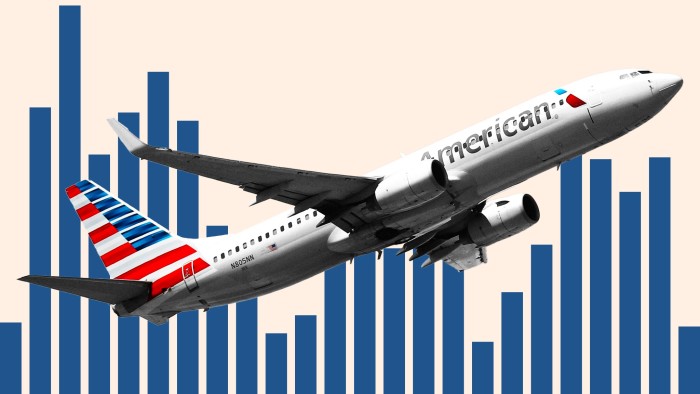Unlock the Editor’s Digest for free
Roula Khalaf, Editor of the FT, selects her favourite stories in this weekly newsletter.
Late last month, a helicopter and passenger airliner collided mid-air over the Potomac River in Washington DC, killing all 67 on board both aircraft. This week, a Delta Air Lines jet crashed on the runway in Toronto, catching fire and rolling upside down, though no one was killed. Between those two incidents, a commuter plane went down off the coast of Alaska, killing 10 people. Then on Wednesday a mid-air collision in Arizona left two people dead. Is aviation’s enviable safety record breaking down?
It helps to consider smaller and larger aircraft separately. We‘re often told flying is the safest mode of transport. But that depends. For commercial airliners it’s unquestionably true. But smaller commuter planes such as the one that crashed in Alaska have a higher fatality risk per hour compared to car travel, and the smallest private planes can be as much as 10 times more dangerous than driving.
The examples above are in fact only a subset of the 10 fatal air accidents in January in the US. Yet far from indicating an alarming spate of incidents, this was an all-time low for the month. Sadly, fatal crashes with smaller planes are not uncommon but here, too, the trend is generally in the right direction.
If we narrow our focus to large commercial passenger flights, the deadly Washington crash is the exception that proves the rule of increasing safety. It is the first US mass-fatality flight since a turboprop plane crashed in 2009 in New York state killing 49 people. Deadly crashes of large planes have gone from several a year in the 1980s and early 1990s, to one every several years today.
The same trend is apparent around the world: the rate of serious crashes of large planes is at or near all-time lows in every region apart from Africa, and even there it’s just a third of what it was 20 years ago. Commercial air travel remains very safe.
But although deadly passenger airliner crashes remain rare, these extreme and often luck-dependent edge cases are not necessarily the best yardstick for assessing aviation safety more broadly. What happens when we expand the criteria to incidents that fortunately did not result in major loss of life? Could there be ominous trends beneath the surface that just haven’t been fully realised yet?
Some people have raised concerns over increasingly crowded skies due to the advent of private air taxis and drones. While there is yet to be a major incident, US data shows that close encounters between commercial airliners and drones have been on the rise, with dozens of close calls and minor collisions now reported by pilots every year, some requiring them to change course.
Alarms have also been raised about near misses between large jets, particularly runway incursions where two planes come scarily close while navigating take-off and landing, often due to errors by increasingly stretched air-traffic control staff. While these incidents did become more common during the early 2000s and 2010s, the nearest misses remain exceptionally rare (occurring less than once in every million take-offs and landings), and rates have been flat if not falling slightly in the most recent years.
Nonetheless, there are mounting concerns that the already chronically understaffed US air-traffic control service could be plunged into a full-blown crisis due to the firing of hundreds of these federal employees in the latest round of President Donald Trump and Elon Musk’s so-called war on inefficiency.
Understaffing of air-traffic control has been cited as a possible contributing factor in the DC crash, although the helicopter pilot was in dialogue with the control tower leading up to the collision and appeared to have acknowledged the jet’s proximity.
There is also concern over increasing turbulence, fuelled by climate change, with one death after a particularly extreme case on a London to Singapore flight last year. Thus far there is no evidence of a rise in rates of serious incidents caused by these conditions, however.
Taking all available evidence together, there is certainly no cause for complacency, and some risks do appear to be higher today than a decade or two past. But despite the recent spate of high-profile incidents, there is no indication of a deterioration in safety in recent months or years. Considering the enormous and increasing complexity involved, commercial air travel’s continued excellent safety record remains remarkable.














